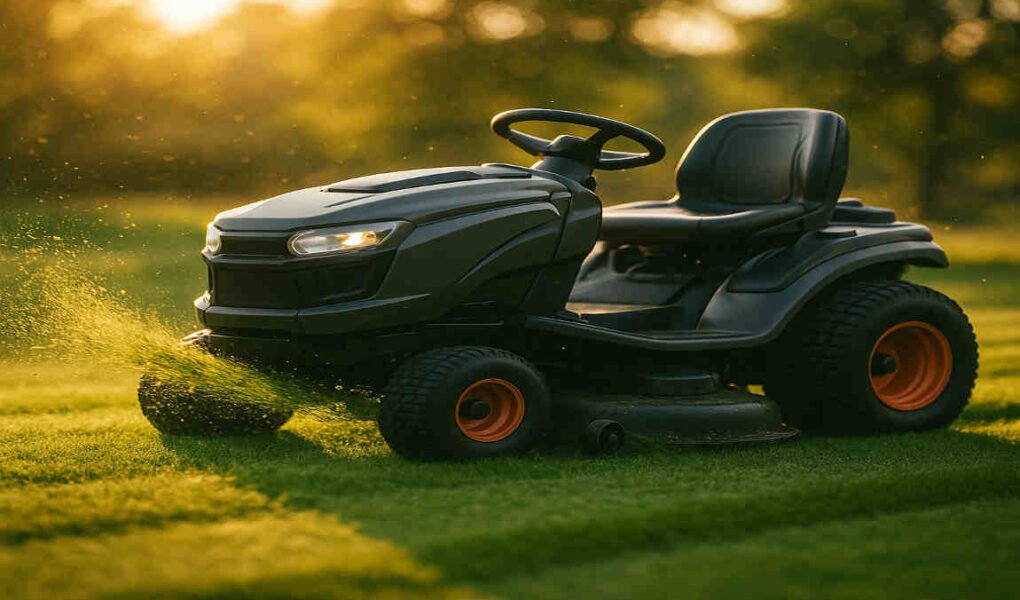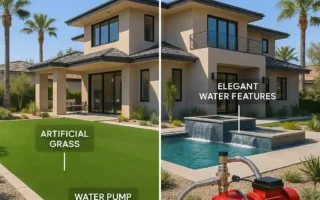You know that sinking feeling when your riding mower quits halfway through the yard? The one where you stare at a $3,000 lawn tractor that suddenly became the world’s heaviest lawn ornament? I’ve watched too many homeowners make the same costly mistake, they rush to buy parts before actually understanding what’s broken.
Let me save you the frustration. After years in the trade, we’ve learned that finding the right ride on mower parts comes down to three simple rules most people ignore. This isn’t some parts catalog spiel, it’s the hard-won knowledge shop mechanics use to keep these machines running season after season.
Your Mower’s Hidden Birth Certificate
That weathered sticker under the seat isn’t just decoration. The model and serial numbers are the only reliable way to match parts to your specific machine. The problem is, manufacturers hide these tags in different spots just to keep things interesting.
On most residential riders, you’ll find the plate:
- Under the seat frame
- Behind the front wheels
- Inside the frame near the engine
- Under the foot platform
Here’s a pro tip: Use your phone to scan the QR code if your tag has one. Many manufacturers now link directly to parts diagrams and manuals. No QR code? Take multiple photos from different angles – sunlight glare can make stamped numbers disappear.
Why Parts Diagrams Are Non-Negotiable
The moment you crack open an illustrated parts manual (IPL), you’ll wonder how anyone fixes mowers without one. These factory diagrams show every bolt, belt, and bearing in your machine with exact part numbers.
Finding yours is easier than you’d think:
- Grab your model number
- Search “[Your Brand] [Model] IPL”
- Stick to manufacturer websites or trusted dealers
The diagrams reveal secrets the parts stores won’t tell you – like how that idler pulley you need comes only as part of an assembly, or why the “universal” belt everyone sells never fits quite right.
The Diagnostic Dance
Throwing parts at a riding mower is like playing mechanic roulette. Here’s how the pros actually troubleshoot:
When the engine won’t turn over:
- Start with the battery connections (85% of “dead mowers” just need terminal cleaning)
- Check the safety switches before condemning the starter
- Test the solenoid with a screwdriver before replacing it
For cutting deck issues:
Inspect spindle play before buying new ones
Track belt routing with chalk marks before disassembly
Look for worn pivot points that throw alignment off
Hydraulic problems:
- Check fluid levels and filters before rebuilding pumps
- Look for weeping hoses that suck in air
- Remember these systems hate cheap fluids
The Aftermarket Parts Gamble
That $30 steering sector online might look identical to the $150 OEM part, but there’s a reason for the price difference. Critical components like:
- Transmission parts
- Hydraulic components
- Electrical modules
Often work better as genuine parts. But items like blades, belts, and filters can be quality aftermarket buys if you stick to reputable brands.
Assembly Tricks They Don’t Tell You
Even with the right part, reassembly can go sideways:
- Grease every pivot point during reassembly
- Mark hydraulic line orientations with tape
- Torque bolts in stages to avoid warping components
- Keep fasteners organized in labeled containers
Maintenance That Actually Matters
The difference between a 5-year mower and a 15-year mower comes down to:
- Monthly grease gun sessions
- Blade balancing with every sharpening
- Winterizing the fuel system properly
- Storing with the deck elevated
When to Call in Reinforcements
Some jobs require specialty tools and knowledge:
- Transmission rebuilds
- Electrical gremlins
- Complex hydraulic issues
Conclusion
The secret to keeping your ride-on running isn’t about buying the most parts – it’s about buying the right parts. Take the time to properly identify your machine, consult the factory diagrams, and diagnose methodically. Your future self (enjoying cold drinks instead of swearing at parts spread across the garage) will thank you.
You may also read (essential tools every homeowner should own for outdoor projects).




